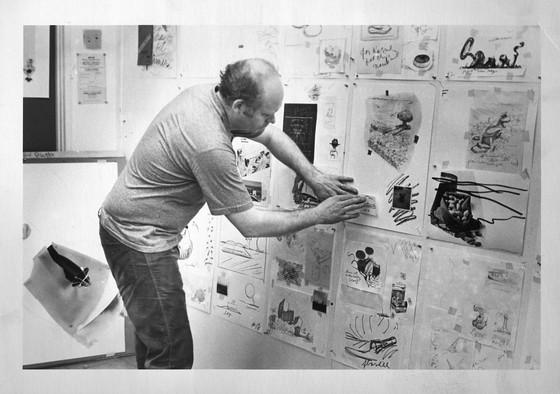The Serial Impulse at Gemini G.E.L., currently on view until January 2, contains some of the largest and technically ambitious prints ever made. Not to be missed, however, is a more modestly scaled but witty and engaging portfolio by Claes Oldenburg. Simply titled Notes, the portfolio contains 12 color lithographs (some with embossing) and 12 accompanying text pages created and written by the artist during a nine-month stay in Los Angeles in 1968. As Oldenburg explains, Notes were “the first attempt to put into more permanent form the scribbles and scratches that occur on any handy fragment of paper during the day.” The artist’s sketches and collected snippets, like postcards, snapshots, and newspaper advertisements, have been artfully assembled and presented like a scrapbook of ideas for “monuments” that, said Oldenburg, “may be defined as objects or parts of the body increased to colossal scale and set in a landscape.”
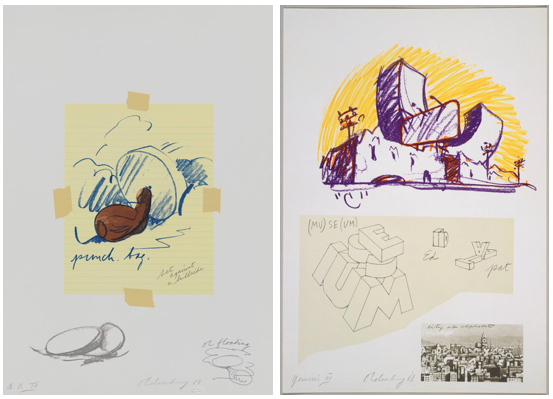
Many of the ideas for public sculpture in Notes relate to the particular landscape and character of Los Angeles. The hills that surround the city provided the perfect settings for nestling a giant nose or oversized punching bag, while the Hollywood sign inspired his vision of the “City as Alphabet” in which “a colossal alphabet spilled haphazardly over the basin—an effect like an earthquake.”
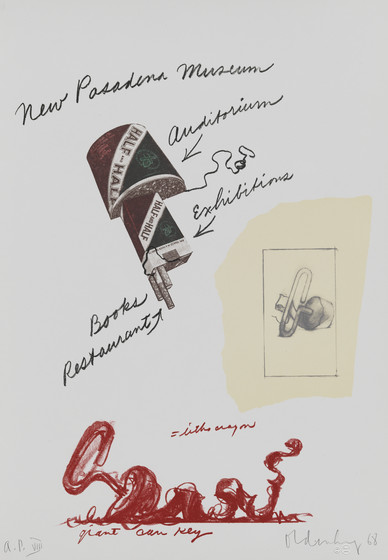
At the time, the Pasadena Art Museum (now the Norton Simon Museum of Art) was undergoing a controversial building project, so Oldenburg offered up his solution: a structure derived from a halved “Half and Half”-brand tobacco tin adjoined by a pack of cigarettes. A giant “can-key” or can-opener (used, presumably, to open the tin of tobacco) became a “fair sculpture” on the museum grounds that was “uncontroversial and organic to the conception.”
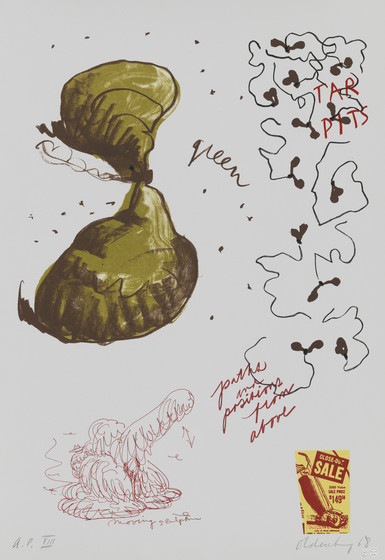
Another example of Oldenburg’s creatively tangential way of thinking is his plan for a moving sculpture to roam in Hancock Park around LACMA. Inspired by a manned sweeper “doing its daily sucking on the flagstones” outside the museum, Oldenburg envisioned two enormous inflated vacuum bags attached “like ears or arms” to a tractor in motion amid the tar pits—a modern-day behemoth evocative of the mastodons who roamed the area tens of thousands of years ago.
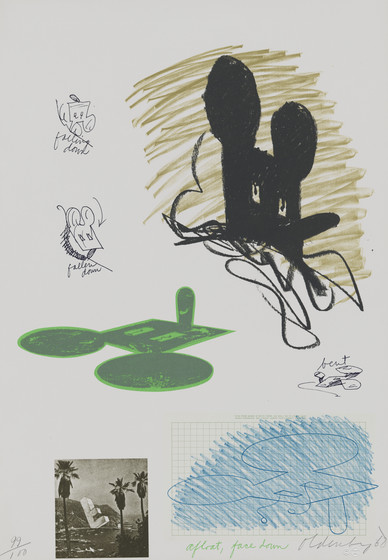
The apparatus of Hollywood cinema and one of its most celebrated animated characters fuse in Oldenburg’s “Geometric Mouse” whose “ears” are film reels and square head is a film projector. It was the only idea in Notes that was actually realized (in varying scales and colors) and has become emblematic of the artist and his work. Here depicted perched atop the Hollywood hills, the “Geometric Mouse” befalls an unfortunate fate as Oldenburg sketches it tumbling down the hillside until it lands, “bent.”
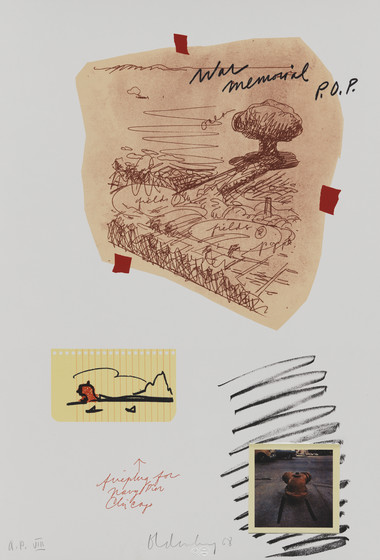
Pathos is often employed by the artist to temper the seemingly light-hearted and playful qualities of his imagery. Dismayed by the dilapidated P.O.P. (Pacific Ocean Park) in Santa Monica (as well as Coney Island and Chicago’s Riverview), Oldenburg came up with his own design for an amusement park featuring a replica of the H-bomb cloud that would house a restaurant and auditorium, “something for families on Sundays.”
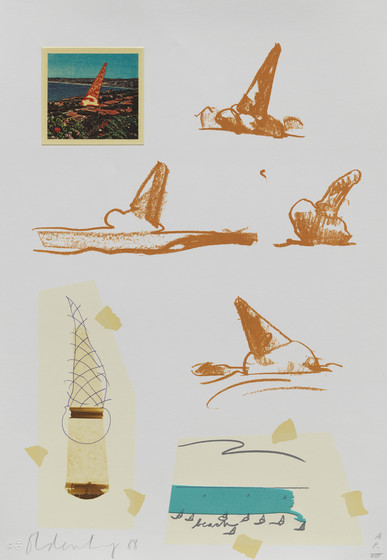
Slightly less despairing was his proposal to beautify the pervasive oil derricks that littered the Southern California landscape (even more so then than today) with upturned ice cream cones. Tapping into the absolute sadness and despair of the childhood experience of dropping a greatly anticipated ice cream cone, Oldenburg summons the primal feeling of dashed expectations and loss.
For an artist associated with pop art and issues related to mass culture and consumerism, Oldenburg’s work is equally emotional and psychological and, as displayed in Notes, directly related to his personal experience of a place—in this case, the city of L.A.
View these works and more in The Serial Impuse at Gemini G.E.L., on view at LACMA through January 2, 2017.



